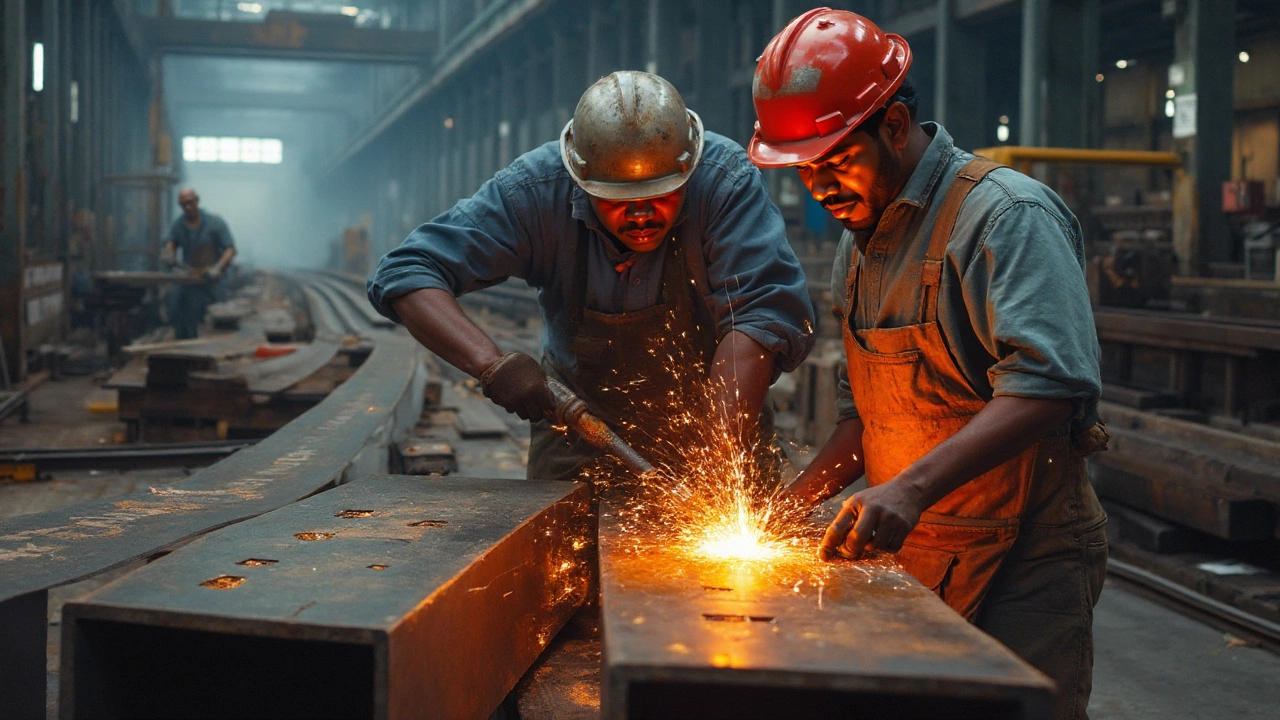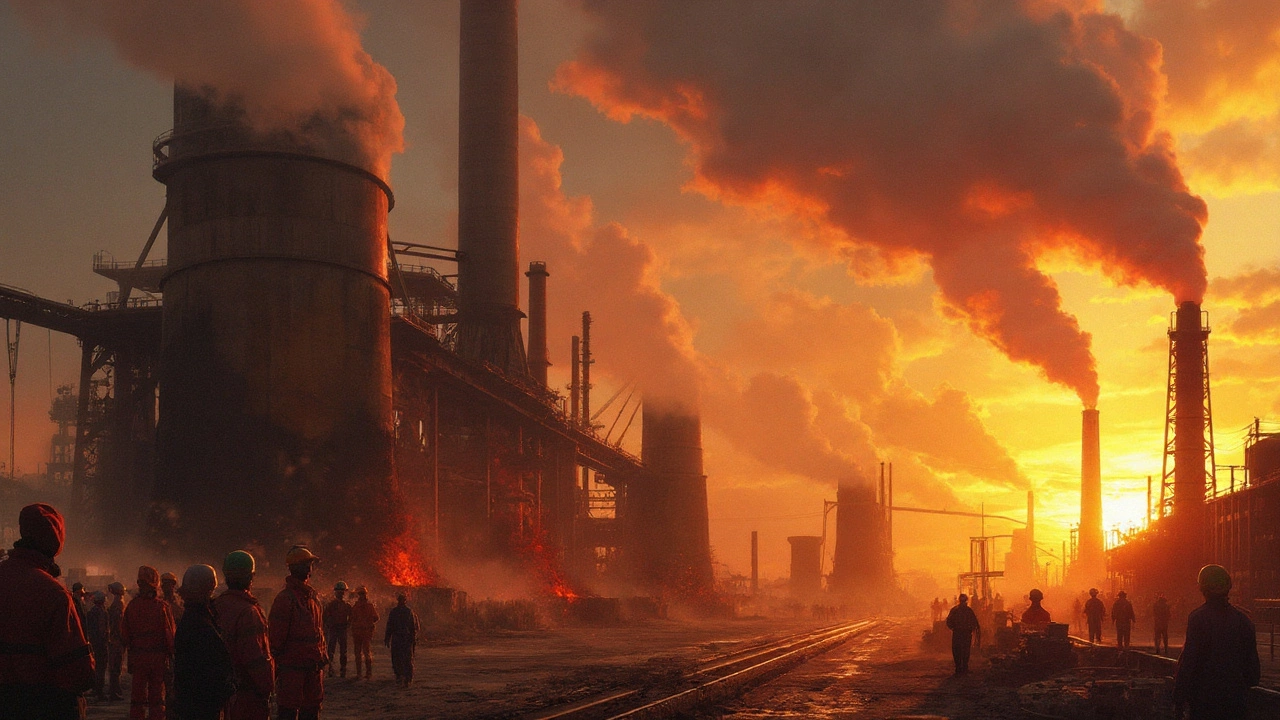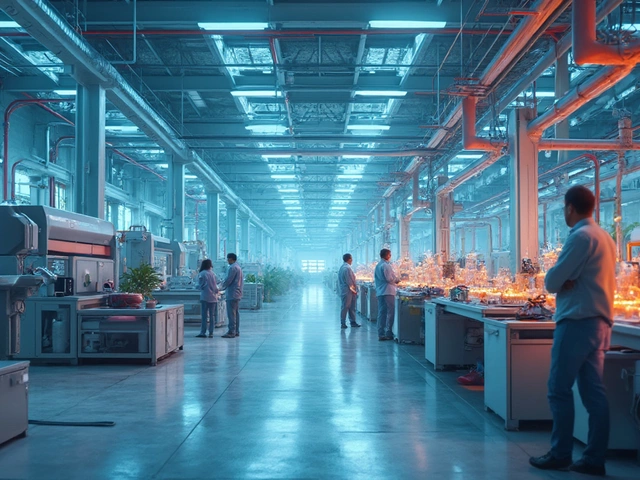Think "steel" and a lot of us picture giant factories, molten metal, and maybe an old newsreel from the Rust Belt glory days. But ask someone today if steel is still made in America, and you’ll probably hear a shrug, a joke about cheap imports, or a rant about lost jobs. Turns out, the real story has a lot more punch—and even some big surprises—than most folks expect.
What Does “Made in the USA” Mean for Steel?
Everybody has that friend who swears that every hunk of American steel vanished with cassette tapes and phone booths. Here’s the kicker, though: there’s still a huge amount of steel being made in the USA right now—just not always where, or how, you might picture it.
Let’s set things straight. “Made in the USA” for steel means the melt—the part where the scrap or raw iron gets melted down and turned into new steel—has to happen on American soil. Products that are just rolled or finished stateside, but started off as foreign steel, can’t claim to be American steel. The Federal Trade Commission actually checks into this stuff, so trust but verify your steel labels, just like you'd double-check a dog’s pedigree at the shelter (Rolo says hi, by the way!).
So, if you’re asking, “Can I find American-made steel for my new backyard project, my truck frame, or even a skyscraper?”—the answer is yes. But finding it might take a little more digging than just picking what’s at the hardware store.

Where Does American Steel Really Come From?
The map of America’s steel industry looks way different than it did fifty years ago. Back then, Pittsburgh, Gary, and Detroit were stacked with smoke, sparks, and union jobs. These days, while some of those legendary mills are gone, new players have moved in—and the mix is surprisingly resilient.
The backbone of US steel today is a blend of traditional integrated mills and newer “mini-mills.” The old-school integrated behemoths—think U.S. Steel or Cleveland-Cliffs—still melt iron ore in blast furnaces, cranking out heavy plate and slabs for cars, appliances, and construction. These giants are mostly in the Midwest and around the Great Lakes.
But the real shake-up came with mini-mills, pioneered by companies like Nucor and Steel Dynamics. Instead of starting from scratch with ore, these guys melt scrap steel in supercharged electric arc furnaces (EAFs). They pop up in places you wouldn’t expect, like Arkansas or Indiana, and are nimble, efficient, and greener by design. Right now, over 70% of U.S. steel comes from EAFs, much of it made from recycled cars, appliances, and bridges. It’s the steel equivalent of buying a previously chewed dog toy and giving it new life with Rolo’s slobber.
Take a look at some hard numbers from 2024, just for some real context:
| Company | Location | Type | Annual Production (million tons) |
|---|---|---|---|
| Nucor | North Carolina, nationwide | Mini-mill (EAF) | 25.0 |
| Cleveland-Cliffs | Midwest/Great Lakes | Integrated & EAF | 18.0 |
| Steel Dynamics | Indiana, Texas, more | Mini-mill (EAF) | 13.5 |
| U.S. Steel | Pennsylvania, Alabama, Arkansas | Integrated & EAF | 12.0 |
Pretty wild, right? In 2024, the United States churned out more than 85 million metric tons of raw steel—good enough for the top spot in the Americas, and usually in the world’s top five behind China, India, Japan, and Russia. The real twist is that while production soared in the 1950s and dipped in the 1980s, US steel bounced back in the 2000s, thanks to technology, recycling, and a sharp eye for energy savings. The old smoke-stack image? It’s mostly swapped for high-tech control rooms, automated furnaces, and maybe a food truck parked out front instead of a lunchpail line.
You’ve also got small specialty steel makers cranking out tool steel, pipe, rebar, or even custom alloys for everything from rocket ships to wind turbines. The steel that holds up the Freedom Tower? Yep, that’s all-American. You can also spot US steel in military hardware, bridges, and even those sleek subway rails that zip under New York City.

Is It Worth Buying American Steel?
This isn’t just a question for flag-wavers and history buffs. For builders, engineers, and regular folks fixing up a porch, the “buy American steel” debate is more complicated than it seems.
First, quality matters. U.S. mills have to follow strict rules—sometimes to the letter of government regulations—about purity, strength, and consistency. Importers don’t always play by the same rulebook. You hear stories in forums and contractor groups: someone cuts into foreign rebar and finds sand, or welds a beam that cracks under stress. American steel, on the other hand, tends to be more reliable—especially for serious projects where you need to trust your materials.
The environmental angle is another big deal. American “mini-mills” use mostly recycled scrap and renewable energy, which cuts carbon emissions big time. According to the American Iron and Steel Institute, US steel production puts out less than half the CO2 per ton compared with Chinese mills, and even less compared to some emerging markets where pollution controls are…let’s just say, not a top priority. That means a Made-in-USA beam is lighter on the planet, not just your conscience.
Then there’s the jobs question. US steel workers aren’t making as much as they did in the heyday, but these are still good solid jobs—the kind you can raise a family on in small-town America. Unions have shrunk, but in places like Gary, Indiana or Arkansas, the factory whistle still matters. With each ton of steel from an American mill, there’s some local shop, diner, or school getting a boost.
Now, there’s no point pretending American steel is always the cheapest option. Imports, especially from China, Mexico, or Turkey, sometimes undercut local prices by 15-20%. That’s why finding “cheap steel” online rarely gets you the full story. In many cases, shipping costs and tariffs can even things out, so it pays to check with local suppliers. Sometimes you’ll be surprised—especially for big jobs, American mills will negotiate prices if you ask.
Looking for American steel? Here’s what I’ve learned (usually after a lot of Googling and a few awkward phone calls):
- Check the Mill Test Report (MTR): Any legit US steel comes with paperwork tracing each piece back to the melting furnace, date, and chemical makeup.
- Ask, don’t assume: Local distributors sometimes mix domestic and imported stock. Say you want steel made in USA specifically.
- Look for certifications: “Buy America,” “ASTM,” or “Made in USA” stamps usually mean it’s passed strict rules.
- Get to know scrap yards: Many mini-mills source from local recycling yards. When you buy recycled steel, you’re literally supporting the whole local loop.
- Don’t fall for fake “patriotic” brands: Some products wave the flag but source their steel from overseas. Always double-check the paperwork.
Here’s another twist: a lot of American companies are investing in high-end, specialized, or eco-friendly steels. Think lighter car bodies, quieter train rails, or wind turbine bases. The Cleveland-Cliffs plant in Ohio recently started turning out super-strong automotive steel that even Tesla is sniffing around. If you’re wondering about American steel’s future, this high-tech direction could be the ticket.
From skyscrapers to street signs, yes—American steel is alive, kicking, and a lot more interesting than most people think. You don’t have to dig too far to find it. Just ask, demand the right paperwork, and keep your eyes peeled for smart new ways this old-school industry is getting its groove back. Next time you walk over a bridge or drive by a construction site, there’s a solid shot the backbone of that project was made right here—melting, rolling, and cooling inside an American factory, just as it has for generations.






